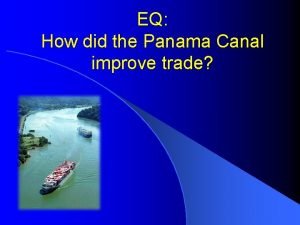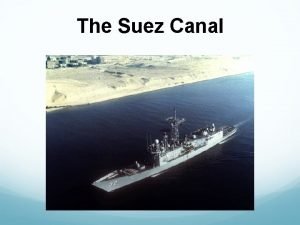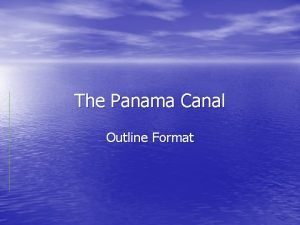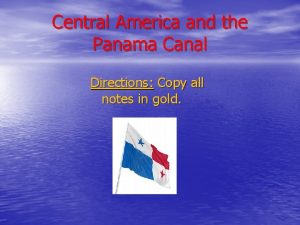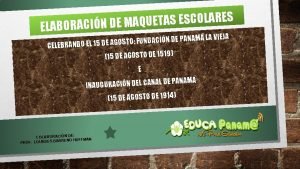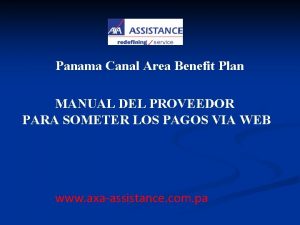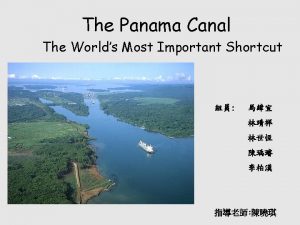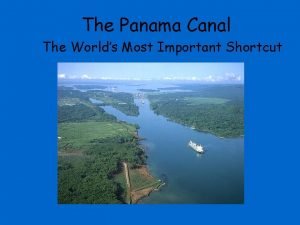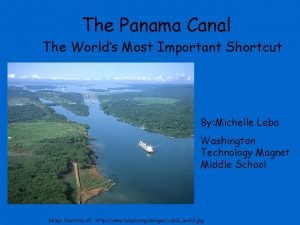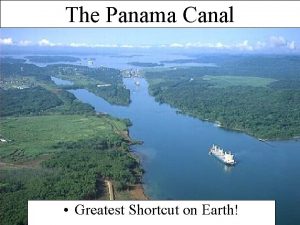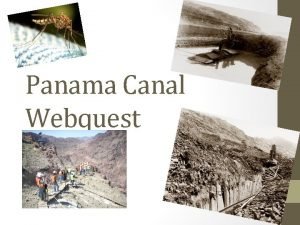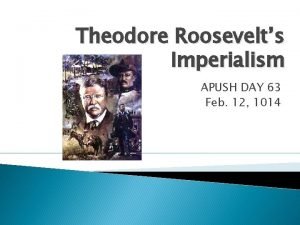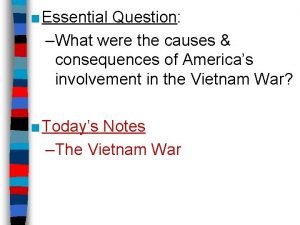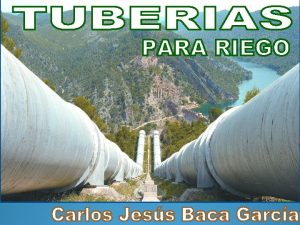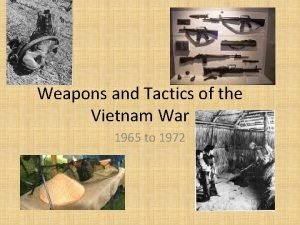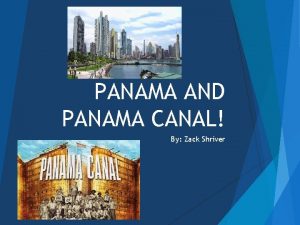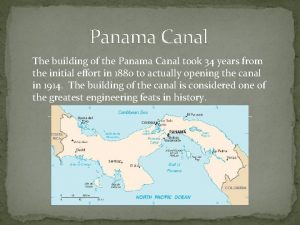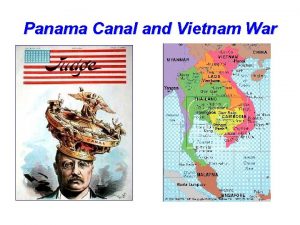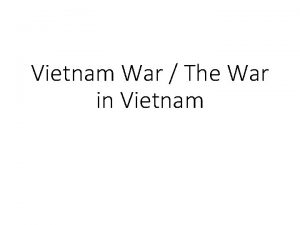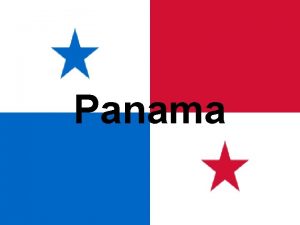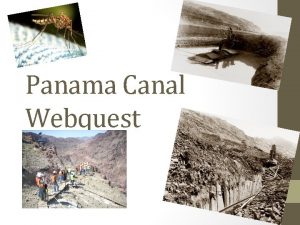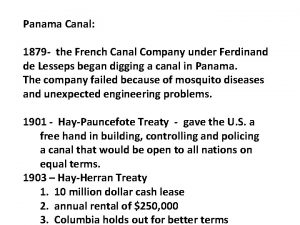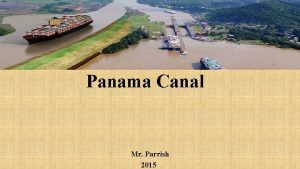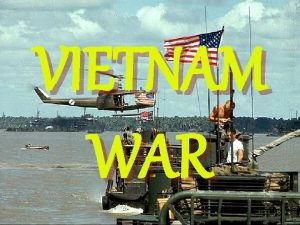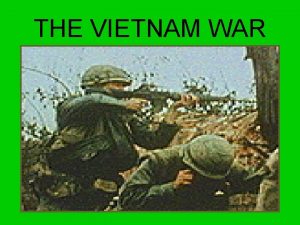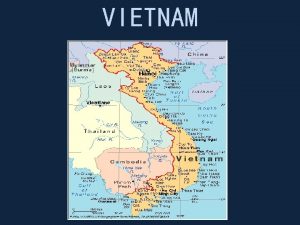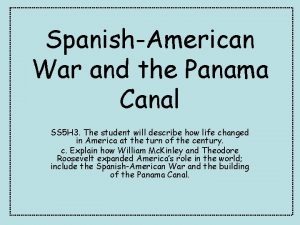Panama Canal and Vietnam War The Need for
















- Slides: 16

Panama Canal and Vietnam War

The Need for a Panama Canal • After the Spanish American War, Teddy Roosevelt needed a short cut

Speak Softly, But Carry a Big Stick! Use Naval force to protect American Interest

T. R. and the Panama Canal v. Teddy Roosevelt, " I took Panama!” v. U. S. makes a deal with Panama to build and control the canal


The Canal was Built at a Huge Cost v Built 1904 – 1914 v Challenges: volcanic soil, disease (malaria and yellow fever), dangerous conditions v Over 43, 000 workers employed v 5, 600 die during construction (accidents + disease) v Cost U. S. about $380 million v U. S. paid Columbia $25 million for lost land

Constable of the World

Handover of the Canal • In 1977, president Carter signed two treaties, agreeing to return the Canal to Panamanians in 1999

Vietnam War • As Cold War intensified, the key to stopping the spread of Communism was Vietnam � • France gave up its control in Vietnam, Laos, and Cambodia in what was called French Indochina

Containment Policy/Domino Theory • North Vietnam Communist leader Ho Chi Minh led a war of independence to unify the partitioned Vietnam • Eisenhower saw the danger and made his Domino Theory speech in 1954 and laid the foundation for US involvement in Vietnam

Tonkin Bay Incident In 1964, after the Gulf of Tonkin Incident, where two American destroyers were apparently fired upon by the North Vietnamese, Congress passed the Gulf of Tonkin Resolutions and gave president Johnson the power “to defend Vietnam at any cost. ”

The War Intensified • LBJ started sending troops to Vietnam in 1965 • By 1968, more than half a million US troops were fighting in Vietnam • After the “Tet Offensive”, a surprise attack by the North Vietnam army in 1968, the US public began to doubt the government and its claim of winning the war

My Lai massacre, the use of napalm, public execution of suspects gradually turned the US opinion against the war

Nixon won the Whitehouse in 1968 and began his Vietnamization policy • Nixon and his advisor Henry Kissinger wanted to gradually withdraw U. S. troops & replace them with South Vietnamese soldiers • But he instead increased bombing Hanoi and ordered an invasion of Cambodia

Protests Continued/ Draft Dodgers /Kent State Massacre

The Fall of Saigon • In a series of peace talks, the US finally got out of Vietnam in 1973 after all parties signed a ceasefire • In 1975, North Vietnamese violated the ceasefire, toppled the South Vietnamese government and unified the country
 Korean war vietnam war venn diagram
Korean war vietnam war venn diagram Truman doctrine and marshall plan venn diagram
Truman doctrine and marshall plan venn diagram How did the panama canal help improve trade
How did the panama canal help improve trade Suez canal map images
Suez canal map images Panama canal outline
Panama canal outline Latin america acrostic poem
Latin america acrostic poem Escolares maquetas de panama la vieja
Escolares maquetas de panama la vieja Axa assistance panama canal area benefit plan
Axa assistance panama canal area benefit plan World shortcut panama canal
World shortcut panama canal World shortcut panama canal
World shortcut panama canal Canal zone brats
Canal zone brats Panama canal
Panama canal Canal
Canal Big stick diplomacy apush
Big stick diplomacy apush What were the causes and effects of the vietnam war
What were the causes and effects of the vietnam war Unidades por hora
Unidades por hora Us weapons vietnam war
Us weapons vietnam war


